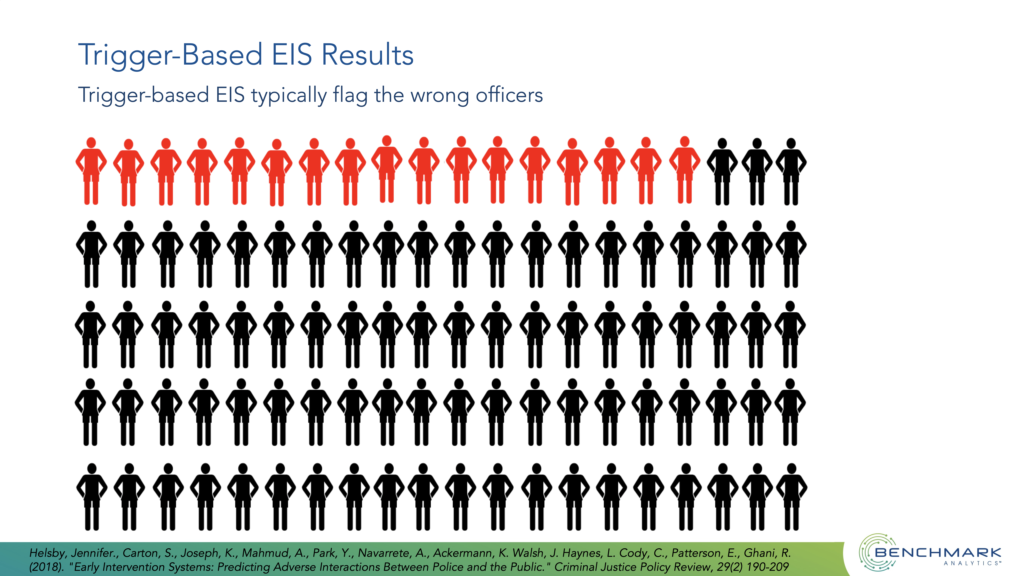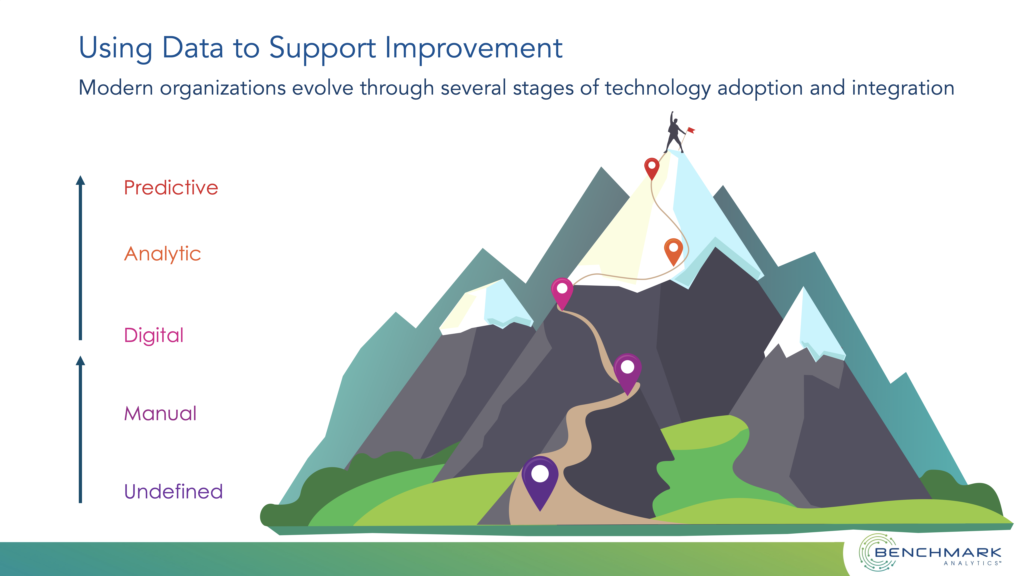What could you do, as a leader in law enforcement, with a truly holistic and preventative early intervention system? The proposed benefits are well-documented:
- More insight into negative and positive behavior trends
- Provide officers an opportunity to self-correct ahead of behavior necessitating disciplinary action
- Increased police legitimacy and through that improved relationships with the community your agency serves.
Implementing such an EI system sounds like the obvious choice. Unfortunately, most EI systems don’t actually provide this level of insight because they rely on threshold-based systems and simple triggers.
This type of system doesn’t enable supervisors to be proactive when addressing off-track behavior. A research-driven EI system has arrived to meet this need. Knowing a solution exists, what else might prevent your agency from successfully implementing a 21st century early intervention program?
Challenges to Successful EI System Implementation
Despite being around for 30 years (at least in concept), EI systems still face some resistance within agencies. Little of it has to do with the outcome of the system as much as misunderstandings around how the system works and why it exists. The outcome is clear: prevent the need for discipline by addressing off-track behavior before it leads to adverse incidents. So why do some agencies still struggle to fully realize the potential of EI systems?
Officer Perception
“It is imperative to communicate that the system does not focus on disciplining employees but on assisting supervisors and leadership in preventing disciplinary issues from arising and to improve the overall performance of all agency members.” 1
Because existing EI systems use inaccurate methods for evaluating risk, many officers associate early intervention with being flagged for doing their job. The EI system is not a mechanism for doling out disciplinary measures to your officers. Rather, it’s meant to help supervisors avoid situations where formal discipline is necessary. You need to help your agency understand EI systems from this perspective, highlighting this type of technology is intended to offer additional support to officers, ensuring they are equipped with the training and feedback to do their best possible job.
Uncertainty about Data
“It is also critical for employees to understand how the system works and the factors it considers.” 2
Law enforcement produces a significant amount of data just in the course of doing everyday police work. Sophisticated EI systems use this data to determine how likely an officer is to engage in off-track behavior. Some officers might perceive this as additional tracking or oversight, or worry that personal data is being used to evaluate their ability to do the job. However, this is far from the reality. For example, consider how data and analytics factors into professional sports. Athletes want their data to be captured and analyzed so they can improve their game to the nth degree. EI systems offer a sliver of that some opportunity for excellence. Also, having a clear policy in place delineating between what data is captured, what data is exempt, and how it’s used to power the system will also help alleviate uncertainty.
Inaccurate Data
“Another challenge arises when those responsible for entering data into an EI system are not consistent and diligent in doing so when only some supervisors enter data, the database does not become the robust system needed for an effective EI system.” 3
We’ve all heard the idiom, “garbage in, garbage out.” Because your EI system runs on data, its quality determines the actionability of the insights generated by the software’s analytics. An EIS typically draws on existing data sources like CAD and RMS platforms along with its own data. Ensure your agency is operating in such a way that accurate data becomes the standard operating procedure.
Supervisors Fail to Adopt the System
“Similarly, if supervisors and command personnel do not monitor the EI system, they miss opportunities for proactive intervention with at-risk employees.” 4
The guiding principle of an EI system is its proactivity. You want to provide supervisors with data points they need to intervene ahead of an officer having an adverse incident with a civilian. In fact, your officers should advocate for having supervisors monitor the system – in effect, they are using analytics to support their officers. Subtle changes in behavior can often be imperceptible to the person experiencing them. And supervisors can’t be with every officer all the time, close enough to observe changes in behavior that might indicate a problem. Having an EI system in place that supervisors readily adopt scales the ability of your supervisors to anticipate the needs of your officers. This will lead to better rapport between ranks, and ensure personnel aren’t left without the appropriate support.
For more information about the challenges of implementing EI systems, read the full COPS report, Law Enforcement Best Practices: Lessons Learned from the Field, here.
1,2,3,4
U.S. Department of Justice. 2019. Law Enforcement Best Practices: Lessons Learned from the Field. Washington, DC: Office of Community Oriented Policing Services




